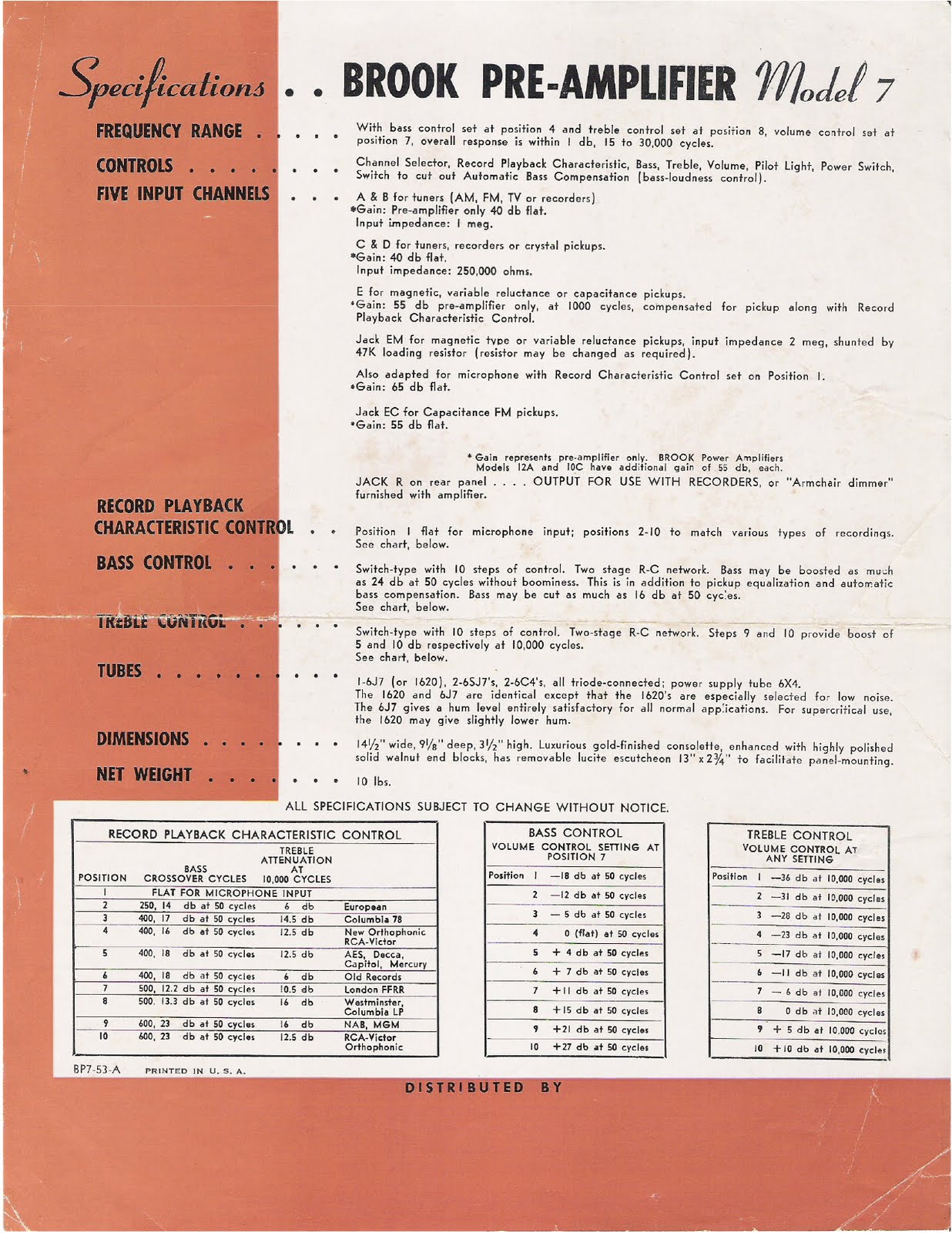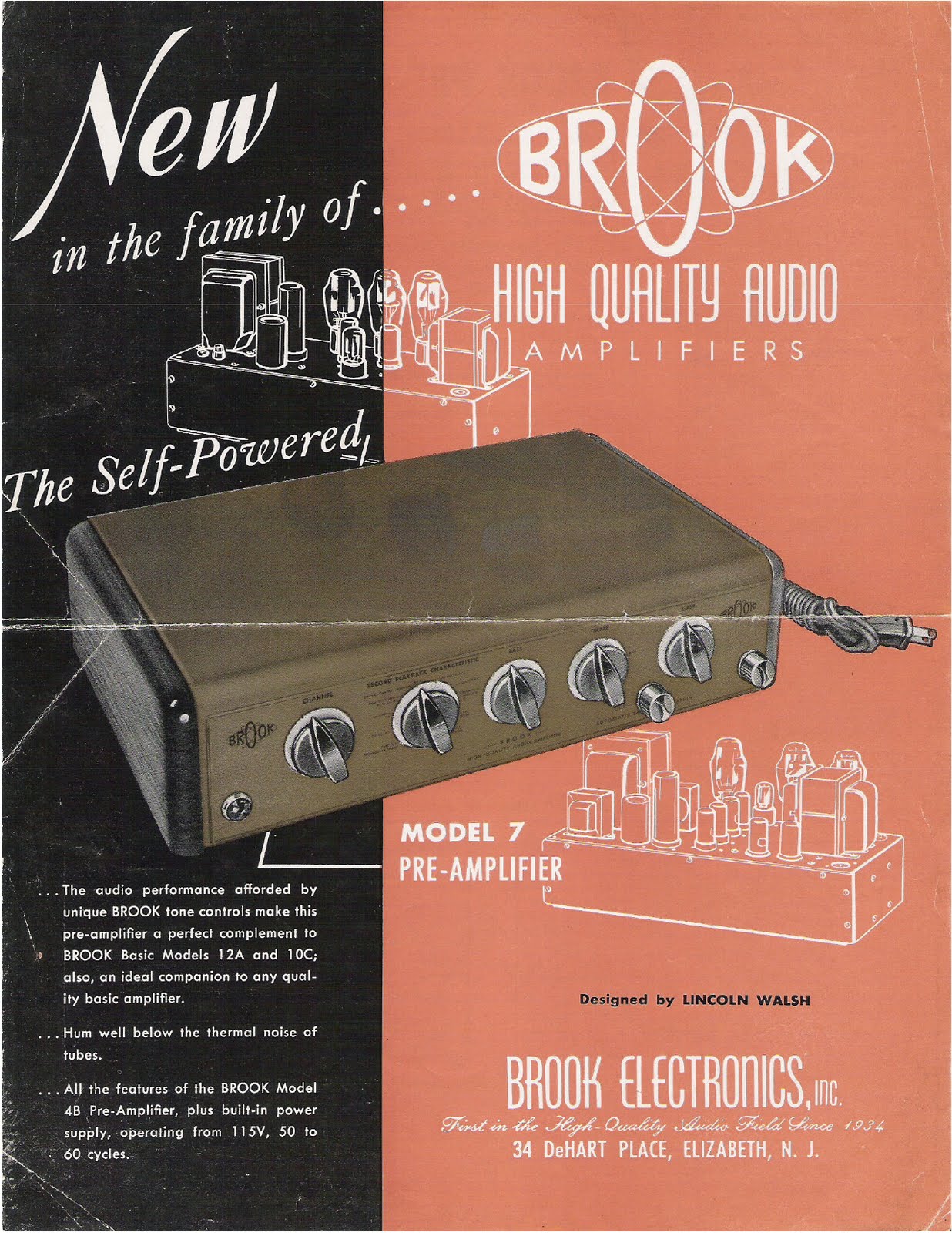Capsular Reviews: Sparkler Audio Products
Capsular Reviews: Micromega MyRange Products
Capsular Review: Flying Mole CA-S10
Revised March 11, 2015 (short note on MyGroov)
Revised Feb 3, 2015 (correction of info on Sparkler S301A)
Like 2013, 2014 went by in a snap, busy with personal agendas which mostly had nothing to do with HiFi. This year I made about the same number of entries in this Blog as last, far fewer than in previous years. However, unlike 2013 and like 2012, I managed again to restore one choice vintage item, and, near the end of the year one thing happened after another, as I finally caught up with some long-coveted Japanese esoterica/legends. Add to this some other bargains, this entry is substantial and more than a retrospective, since it shall also contain some latest brief reviews! Read on...
- Brook 7 Preamp The restoration of this pair of vintage monoblock preamps must be counted as my best effort of the year! For details, please read the cited article. A short quote: "...This kind of sound is impossible to describe, so different it is to almost all other vintage and all modern preamplifiers. Although not without its faults, it is on the same footing as Western Electric, and for me that is the highest accolade..." The significance of this event for me is like the pivotal event of 2012, the re-firing up of my Western Electric arsenal (link here).
- Decca Cartridge This came about because my good friend shidi got the vintage Decca ffss MkIII cartridge...which he sent to my NYC home...well, I listned to it for 3 months and was badly smitten, and am sure there is a Decca in my future. The distinctive lightning-fast leading edge is something once heard, never forgotten. I think it is just as good with mono records, and I would prefer to listen to mono on this Decca stereo than many true mono cartridges.
- Departure of An Old Friend An era has ended when I saw my beloved alnico Klipsch La Scala sold to a friend to make room. He is happy and I have mixed feelings. I hope he buys my other pair and realize my dream of stacked La Scala's!
Year-End Bonanza!
I feel guilty for having bought myself so many presents at the end of the year, enough for a few Christmas...well, one thing led to another... Here is the saga presented chronologically:
- 47 Labs Shigaraki 4716/4715 CD Transport/DAC (Official Japanese website has more info but the US importer website is in English and has a very complete set of review articles; note too that as usual the price in the US is quite a bit higher than in Japan). 47 Labs' claim to fame is the Gaincard amplifier, which uses a humble opamp, very few parts and ultra-short signal path to achieve excellent sound, but sold for a high price. Fame led to many DIY clones, called Gainclones (which includes HK's Clonesaudio). Shigaraki ware (信楽焼) is pottery and stoneware made in the Shigaraki area of Japan. Shigaraki ware were employed to make casings and platforms for 47 Labs' still-not-cheap entry level series. However, the recent death of 47 Labs' supplier has put an end to the series. I don't actively peruse the second-hand markets these days, but by chance I spotted a set and got them. I have previously heard them to good effects several times, but in my own systems (System B/C, described here, in need of update) I could not only appreciate the music they make, but also nail down their specific qualities. The transparency and sinuous tactile quality belie the simplicity. I have heard non-oversampling before (including my old trusted UK AN DAC2), but this is even more direct. There is no free lunch (as with vintage preamps, like the Brook 7 above), with complex material things get unraveled, so you have to weigh your priorities. Full review shall follow in 2015.
- 47 Labs 4737 loudspeakers ("Lens") This is the sleeper in the 47 Labs canon. My friend JC, Australian dealer of 47 Labs, has expressed often to me his admiration for its previous incarnation, the non-alnico 4722. Again, by chance, I got hold of a second-hand pair. In my current limited space, it is wonderfully smooth and matches my System B/Ongaku (described here, in need of update) better than any others I have tried. North American readers should note their dealer makes no mention of the newer model. Full review to follow in 2015.
- Sparkler Audio NOW, this is the REAL news. Founder and designer Kazutoshi Tsukahara was with 47 Labs' Kimura san for a while, and co-developed the 47 Treasure line. Just recently, they parted ways, and Sparkler Audio was formed (official site in English). The products are fully in the vein of 47 Labs, but the prices are much more friendly. With help from old friend vkung, shidi and I procured 4 of their offerings (more detailed reviews to follow):
- S303 CD Player Doesn't it remind you of 47 Labs' Flatfish? Since I already have the 47 Labs Shigaraki set in HK, I ordered a 120V version for me to bring back to NYC. Being impatient, just the other day I took it to my old house, where I put it into my dedicated 120V line and reference system (see my detailed system description in the side-bar to the right). Boy, even raw, did it sound good! In my estimation, it does everything the Shigaraki does (and likely better), in a more convenient (and cheaper) package. Note, I haven't done an A/B comparison. Full review to follow in 2015.
- S301A Loudspeakers I have a suspicion this is the sleeper in the Sparkler offerings. The humble fullrange has no right to sound this good (and I am a fan and reasonably knowledgeable of fullrange's)! Its previous incarnation, the S301 used a Fostex FF105WK (see Taiwan 牙尖嘴利 cynicalaudio Blog in Chinese, or in translation), but the 301A uses the Mark Audio CHR70 (info in Madisound), though the cabinet is likely the same. I am driving it now on my desktop with Micromega Myamp. Surprisingly, or perhaps not, it conveys music in the exact same sinuous way as the Sparkler/47 digitals. Full review to follow in 2015.
- S306 DAC (Pascal) According to Sparkler, this DAC is basically the same one in the CDP. I am using it in my System C (described here, in need of update), driven by Sony. In combination with Cyrus I or Flying Mole CA-S10 (see below), it sounds fantastic, with qualities much like the Sparkler CDP or Shigaraki. This is the perfect way to get the 47/Sparkler sound on the cheap! Full review to follow in 2015.
- S304 Tuner I love its looks. RTHK4's signal is weak in my area. With a rabbit ear I could pull it in (with some noise). Mainland stations are loud and clear. Sound is lucid. Full review to follow in 2015.
- How to buy Sparkler Sparkler's website does not list its distributors. Here is what I know: North American readers should contact Victor of vkmusic, a wonderfully helpful person who heroically promotes and builds up brands like Elekit, and now Sparkler. Hong Kong readers should contact Dominique of iAngel Music, dealer of 47 Labs and Sparkler (2/F, Eton Tower, 8 Hysan Avenue, Causeway Bay; telephone 29107904). Australasia readers should contact Jack of Audio 101 (who hasn't updated his website to include Sparkler). I know all of them, and Sparkler is surely to do well in their hands.
Best Buys
- Sparkler Audio Products If you ask me, they are bargains of the decade! See above.
- Micromega My Range Products If you are a follower of this Blog, you would know the high regard I have for Micromega. The first My Range (official link here) product, the MyDAC, garnered universal praise (summarized in MY review). Now, the Range is fully fleshed out, and I bought almost all of them (HK readers note, some of these, like the MyZic and MyDac, are available at bargain prices locally, so shop around):
- MyAmp This one is now driving my desktop, connected to the computer bu USB and the Sparkler tuner by Kimber PBJ . Sound is good, but so far my views are not exactly in agreement with the commercial press. Note too in my computer environment there is RF noise and sometimes the relays get triggered for no reason. Keep cell phones away too. Full review in 2015.
- MyZic I tested this headphone amp briefly with Sennheiser 600 and AKG 501. Both sounded excellent. A bit lean, but lithe and rhythmically excellent. Full review in 2015.
- MyGroov I first lent it to my friend trazom, who just recently got back into vinyl. He liked it and bought a unit! I recently got it back and took it to my old house. It was unfazed by my considerably more expensive electronics there. Sound is open, balanced and, as one expects from this company articulate, with excellent rhythm and pace. Full review and group test later.
- Belden 1694A Aside from Gotham, and more easily obtainable, best digital cable you can get cheap (if you DIY). Recently, during a visit to my friend WSS (here) I got the feeling something is not optimal with his digital setup. Later, I made a Belden 1694A cable for him and also lent him my trusted Kimber D-60. He invited a bunch of friends to the shootout (I was not present) and all declared the Belden the winner over even the mighty Kimber, not to mention the resident AN UK digital cable.
- Parasound JC3 Now that there is a JC3+, for those who do not regard loading as so important, the older JC3 can be had for a song. Follow the link.
- Flying Mole CA-S10 This is a surprise in a way, but not so much so. I usually don't like Class D amps - they usually have poor bass definition and are short on harmonics. This amp is not quite an exception, but its sins are to a much lesser degree and overall sounds quite good, not to say much better than most T-amps that I have heard. I am also puzzled by the press, which claims it is dry. In my system, it sounds naturally warm. Full review to follow in 2015.
What is the best hifi gear without great music? Nothing. And so I recommend this true collector's item, one of my best purchases in recent years. I am surprised Warner released this set - this collection gathers together all the recordings Kraus made for three separate labels – Parlophone, Ducretet-Thomson and Discophiles Français. Eighty per cent of them have never before been made available on CD in Europe, nor ever widely available in NA. Others have long been oop, previously available in various French EMI Reference issues. Sound is mostly decent mono, and remastering standard is high. Now, is mono hifi? Serious music lovers know it is. A digital system that cannot replay good mono material is not worth its salt, but 47 Labs and Sparkler pass with flying colors.

















